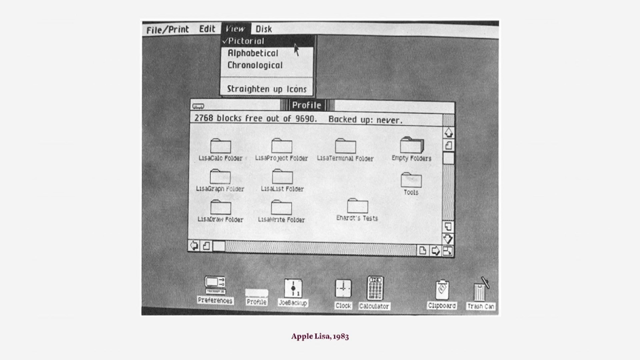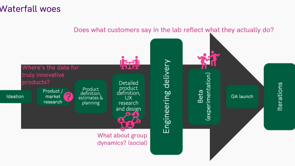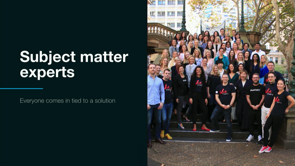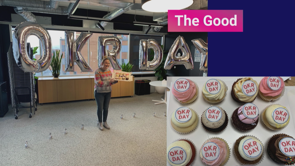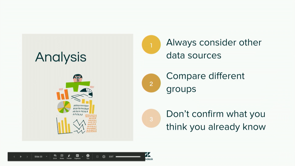Maturing Design Culture in an Organisation
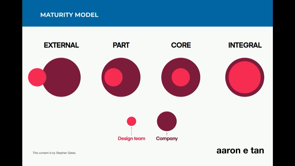
(groovy music) (applause) - I like to interact with the audience a little bit, so do me a favour, ask some questions.
And the first question I'm going to ask to get a sense of the audience here, how many designers do we have in the room? Quite a few of you.
How many developers? Ah, not too bad.
Product owners, product managers? A couple and others? Three, four yep cool.
So, when we talk about design and design culture, what does it really mean? That's a very curious question to me.
And last night just out of curiosity, I decided to hey let's just see what Google says. Any guesses? How many hits there were? Anyone in the audience? ten thousand any other takers? ten thousand going once going twice sold.
It said (off screen comment) Hahaha It's actually way more than that.
And if when I ask a different designer I usually get a different answer.
Design culture means different things to different people. And the same thing in different organisations. So this is what Google said, oops I lost connect with my remote.
That is yeah quite a bit there.
So when we talk about culture itself, to me design culture it's basically culture for an organisation.
It's about both the rituals, the process, the people, the behaviours, you know.
We had a lot of talk about culture yesterday here at directions.
And to me when we talk about trying to mature an design in an organisation we have to think about culture.
All right so I'm just going lay down some garments about design maturity today discuss a lot of models out there. Just for today's reference, this is the model I'm going to use.
So you might not have seen this before basically when talking about a level six or level five, in an organisation basically it's utopia right, a design utopia.
The stakeholders know what design means it's embedded in the culture itself and it's very mature. It's part of the everyday process.
But what I'm going to focus on today is more about the level ones to level fours, where there's a lot of opportunity for growth and how we're going to get there.
So in the level four, basically you do have your design team, you have your design budget, but there's still a lot of room for improvement there. And a lot of the times design is involved in the process but sometimes they might not have that influence in the boardroom yet.
And at level 3, you probably still have a team dedicated to design but what you might not have is a true collaborative process, where whether you're a developer, whether you're a designer, whether you are a product owner or whether you're marketing you might still work in certain silos but you will have a process methodology and kind of like a system in place to facilitate both product development and design. When we're talking about the level two that's when things get a little bit messier. So sometimes in the level two, you might have a small team or else one or two designers or sometimes a bit bigger but most of the time it's going to be a really really tiny team and other times as well you could be a sole designer. Which is going to be very true for level one. So level one you might have, you might be the sole designer in the organisation or they might hirer externals.
And when you're in that situation what you're gonna find is that design doesn't have a seat at the table yet. So you'll be fighting your way to get design in the conversation.
Have you seen this before? So this is a diagram that was drawn by Stephen Gates, so he's a podcaster and design.
He tried to recommend but when you're talking about levels five and six you have a design team that's both really really integrated into the entire business. The way the business works, the way the business thinks, design is core to it.
So in the level ones and twos, probably on the other far end of the counter, where designs still not yet part of the conversation. All right so I like to start with the bad.
First if I'm going to be good when I started this adventure, I'll say, I'd spoken to a lot of the designers both in the Melbourne and in Sydney.
They were all different levels, different organisations, just trying to get a sense about what people mean when they talk about design in their organisation. And for one of the things I did discover is that the size of the organisation you're in doesn't determine the maturity, size of the team doesn't determine maturity of design in the organisation.
So what exactly does determine that? All right so when we talk about all of the issues faced especially in trying to get design going.
One of the major things that I did find up front taking the view and from our experience.
I should also mention that I have worked in organisations from level one to level five, and every organisation have it's unique challenges, but the there's still a few commonalities that you will see. So this is probably one of the biggest that I've found is that there is a true fear of failure.
Doesn't matter whether you are an executive, it doesn't matter whether you're a developer on the ground, but you can see it in the actions that people do, you can see it in the way that the projects have been performed.
So I can give you a few examples here but I'm just going to talk about one today. Where we were trying to, at least between my team, we were trying to renew new work.
We were a small consultant team and we do all have common projects.
If you have ever dealt with common projects before you either have to respond to RFI, which is a response for information or RFQ, response for a quote.
So in this case we were responding to a quote, and in that process we were given three different documentations.
And in the documentation we were reading and we were responding to questions there, it became very clear to at least to me, that what the client wanted was a solution for mobile. But what the account manager pretty much, I guess, because of the fear of failure failed to see that and all he saw was, all right, they need a portal. And a portal that they could use something very quickly. Something that they could use between the office. But that was just trying to solve a symptom of the root problem because they needed something that could be accessed anytime, anywhere.
So I wrote a ten page paper on it, I probably wrote five emails saying that, hey this is actually what the client wants. But when it came to respoding to that quote, quess what, they sent a different solution. And I'll go bit more into that later.
So iterate without vision, everybody familiar with this one? Where in the usual job project process, we do working iterations.
People here working iterations or do you do single release, multi-releases? Yes, no? Iterations yep all right.
So when I talk about iteration without vision here it's that there is no clear goal in mind but what the end state is.
So we might know like hey this how this is going to look, this is what it's supposed to do in the first to second release.
But we want to know what the end goal is going to look like, we won't have an angle.
So we're basically we don't have a focus, you're basically going in blind building a product. So which means there's just no understanding of the real context or what the customer wants.
Which leads into this one.
So we talked about the product itself not having vision. But this is the organisation itself not having a vision. So if I were to ask, say somebody in Google or in Nike, what is your company goal? I'm pretty sure I'll get an answer.
But in an organisation that is of a low maturity in design, you probably got a different answer from different employees or they might not even know.
Or this is the most popular answer I get, can you guess? Well it has to do with money.
So a lot of clients that they've asked in the past and they've answered that vision or the goal of our organisation is to make money.
No that's not true.
This is not unique to design, but it is definitely a major barrier to maturing design. So when you talk about trying to implement new changes, you're really talking about changing the way people think, talking about changing their mindset.
And if it's the way that person has been functioning for a very long time you're gonna get a lot of resistance. So there is no good way around this but I would say that you have to be patient with them and all you can do is, kind of like, give them all the tools to succeed.
So you can pretty much lead a horse to water, but you can't force it to drink.
In the case of organisations that are at level one and level two, I would have to say that it's going to be a really really tough job and it's not probably something that you can do by yourself. It's probably something that you'll have to wait for an executive or a champion within the organisation to pick that up.
So the organisation itself has to realise that, hey, there's a problem.
Before you can implement that change.
So failing without learning.
We have this one here.
One of the major things that organisations do today are retros and I think we do as well, it's a postmortem especially for a lot of their projects. And we talk about what we've got, what went wrong, what we could have done better and how we can improve in terms of both processes, and in terms of both our mistakes.
So one of the things that I've heard from a lot of people, I've ran into at least once or twice myself is that organisation with low design maturity will often run their those retos and postmortems but they were not action.
So the next time we come onto the next project they're making the same mistakes twice or they're making all new mistakes as well. Fear of leaping.
So with fear of leaping it's more about people trying to I don't wanna say having a leap of faith, but going and having any evidence and also having any hindsight to look at the future. You will get a lot of people saying a lot of things, that we wanna do this, we wanna do that, this is the company vision.
But after they, it's what I call lip-service. There might not be any real change, where there are things on paper, but nothing actually happened in the long run. So they'll their mark tactical, their going to have things that have a treatment plan, or even a one month plan, but you will not know what's been, what's the product room at, what's its gonna look in a year or five years. You might not get that clear vision.
All right so we talked a little bit about all those issues that you might encounter within the organisations level one and level two. So that's the most common issues.
But how can we actually fix these issues and grow maturity within those organisations? One of the things that the LA speaker mentioned is that actions are usually based on, they're not just biological, they are based on emotions as well.
And that's very true.
Us as human beings we are biassed, we're prejudiced and we might not have, I guess we can say, clear taught processes when making those decisions especially in an environment that doesn't allow design to thrive.
So one of the things that I think is a major focus and could really, really help especially in an organisation is knowing the core values, what your core values are and what the values of your organisation is. So if you do know that and they are aligned then I think you can start the process you can definitely start that conversation going and saying that hey, this is what we need to do and these are the steps that we need to do to get there. But if your values are not aligned then the only thing your going to give yourself is stress. So I think you, you gotta make sure that those values between the organisation and yourself align first. Design can definitely make a good product great, but you can only do so much with a bad product. So Tony mentioned this.
And when I was looking into both vision and values of different organisations, it seems that of the high performing organisations, or design lead organisations level five and level six have very clear visions, they have very clear values that all the employees embody.
So I'll ask you to go back and think about what is your company values, what are your values, and how do they align together.
So one of the other things, as well, is that if you are in an organisation that's not yet have an embedded design culture, you find that you might have trouble getting budget. There's many constraints in trying to run a design processes and in trying to run design research.
And without a fair budget sometimes, as well, you might not have access to any users.
But I still encourage people to try and run as much research as you can, you know.
Whether its guerilla testing, whether it's people in the office.
Just do as much as you can, otherwise without any research, I can say that your product can never be good. Trying to sell to stakeholders is something you're probably going to be doing a lot.
So trying to make them understand, both the value of design and why research is important. in a way if you manage to get capture the attention of your product manager of your section that's involved, and you manage to sell them both on why research is needed in design, I think you are a step further in progressing that maturity. Okay, evangelise.
I'm not going to use the dirty word allocation here. So with evangelising it's about trying to, I guess, create awareness within the organisation, between your clients, between your other stakeholders that why design is very valuable to your process. And I would definitely encourage people in the room to try to use terms that they might understand. So when trying to push design into different environments, you don't know what the feedbacks going to be, you don't know how they're gonna take it.
Sometimes it could be taken in the wrong way. So sometimes someone could think it's too technical, and they not gonna understand and they drop off. So to trying to create that awareness, I think the first step is basically just trying to make them be inclusive as part of the process.
So include them in your workshops, include them in your meetings, include different people whether you're developer, whether you're an engineer it doesn't matter. Try to keep the conversation going as much as you can. So sooner or later people are going to show interest in what design is and they're going to be asking you questions.
But the point here is to continue to spread the message. Okay you're not going to be able to do that alone. So depending on the size of your organisation could be an organisation around ten could be an organised at 100 or a thousand, ten thousand. You're gonna need to find your champions and your AIs. Once you manage to convert that one person, they are gonna help you to push it to the other teams. So make sure when you go back to the office you know who those people are and evangelise to them, and they're gonna help you get that much further. And you gotta remember as well, that designs not one person's responsibility, it's not just your responsibility, it's the organisations responsibility.
Okay, so.
Velocity it's something that a lot of teams strive for but if your just moving and moving without knowing which direction you're going, I think that you are basically taking two steps back and one steps forward.
So whenever you are done with your sprint, with your project, I think it's very important to take time for both thinking and reflection.
I think that's when you get different perspectives and different insights.
I think insights is the key word.
You need to know, like what are your next steps, where we're going, how we're gonna improve. So making that space both from whatever you've learned whether it's through research or your own work, that there is time for all of this.
All right, when I talked about being resilient and building design muscle because of practitioners for a reason.
If we stop and we don't continue to practise design as a process, where our methodology is.
You're gonna lose the skills.
So you need to continue to push it, you need to continue practising it and you need to continue practising with others. So once you build that community around you, I think that you can then include them in your workflow. So resilience, resilience is about well, I guess you have to be adaptable to any environment, but you shouldn't throw out best practise.
Once you do that you get complacent.
And then you can no longer practise design. So be very wary about trying to be rigid it's a fine line, it's a grey area, you know. Decide how much should I push to the way that everyone should work around me, and how much should I understand them and be mindful of the way they work.
So that then we can find a way to work together. Aha, this is more of just kinda a warning that, yeah, we definitely need hope when we're thinking about growing maturity in an organisation.
But also be realistic, you gotta think about the constraints, you gotta think about the capabilities of your team and you gotta think about your own workload. So trying to get your team to Pick up design responsibilities and learning new design skills or even trying to implement a design system. It's gonna be a little work, especially to a team that's new to design.
So I would say be mindful of what you're trying to do here. But also be realistic about what you can achieve in the timeframe that you have.
All right.
So when it came down to it, speaking to a lot of you designers, I concluded that it basically is about risk.
That every organisation that I've experienced myself and that others have pretty much told me from their own experience, it comes down to risk.
A lot of organisations that hasn't embraced design yet, it's pretty much risk at worst.
They don't, it's not that they're against design it's that, one they don't understand it and since they don't understand, they're not willing to risk the chance of it. So have everybody seen this before? No? Well this is from a book called "Tribal Leadership" and it's pretty much a structure and a way to kind of like build a culture or tribal culture in a sense. And I think it's definitely a way when talking about building design cultures the same way as building a tribe. I'll save some time for questions later.
But if you haven't, if you're not familiar with this I definitely recommend as well looking at Simon Sinek's new book and a few other books, where as, where he talks about both the why and the how of culture.
And there's a design survey by Invision that talks about design maturity globally.
So here I'm focusing more about what I learned locally, but pretty much it's a way a lot of different organisations with a lot of different questions about what is the current state of design.
Just a few other things.
So all right, it's going to be tough, it's going to be hard.
But I think it's still worth doing because both you guys in design can be a force of good. And it's not going to be easy.
You're gonna get a lot of blockers, you're going to get a lot of barrier in trying to push that message around in trying to involve organisation. But I think it's still something that's very much worth doing.
And what you have to do is, I think, you have to do it under the radar or you just have to do it anyway and just ask for forgiveness.
So I'll say say ask for forgiveness later instead of permission up front.
Oh and definitely, give your peers, give your designers a hug within those organisations.
You guys I think they're going to need it.
And yeah open up for questions.
(applause) (groovy music)









